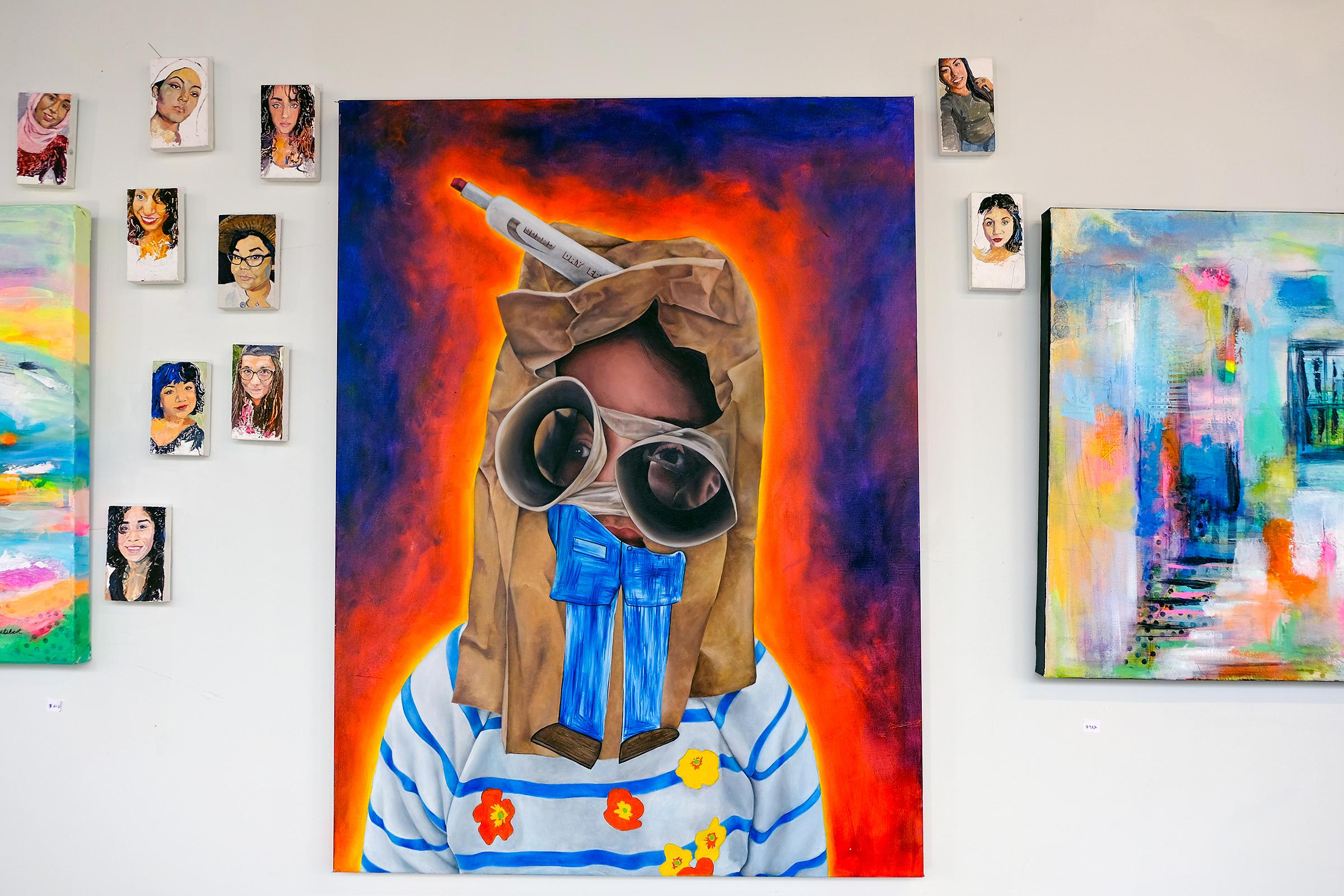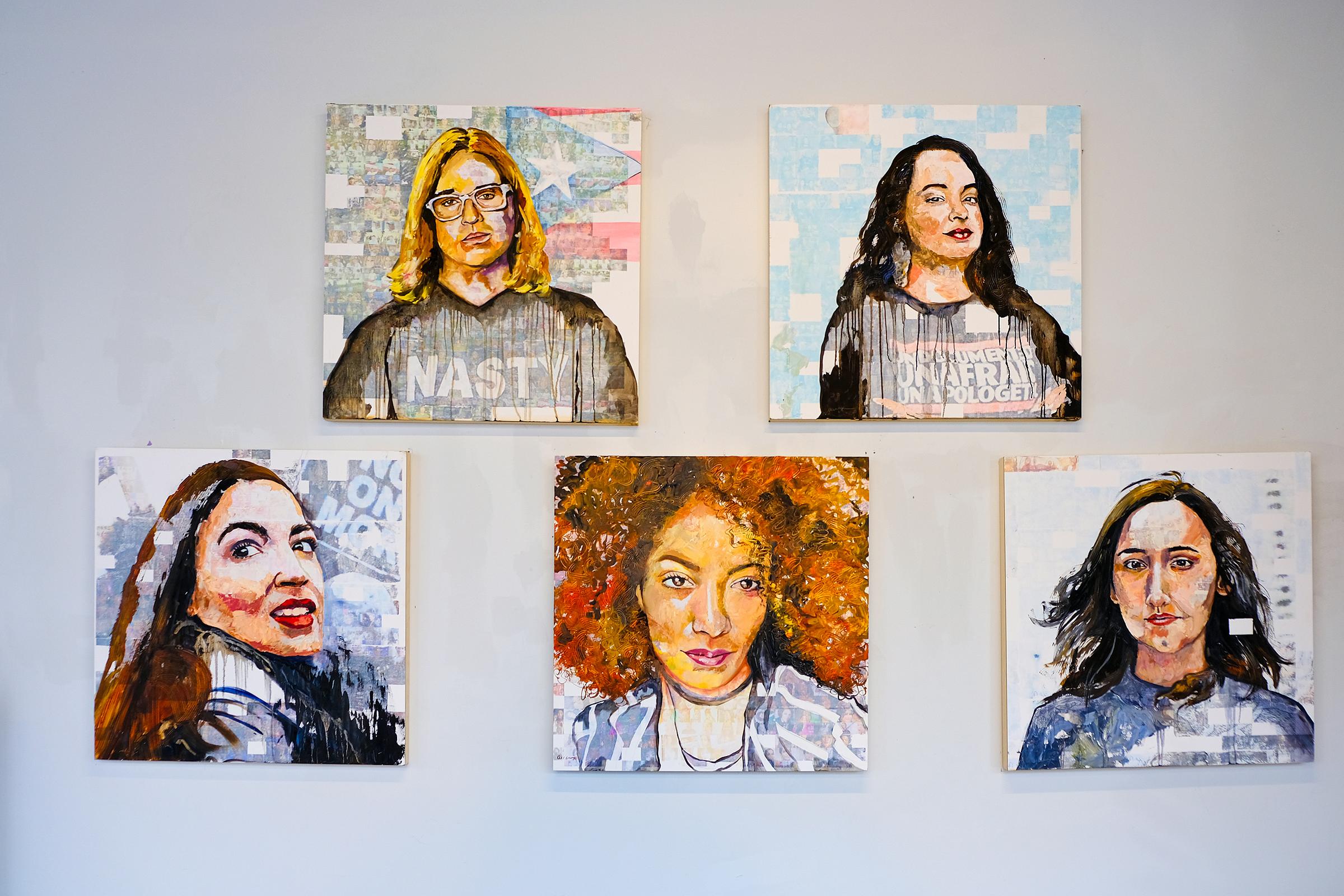Explored in an exhibit that looks below the surface of identity politrix.

Latinx Identities: Struggles, Perspectives, and Critiques
Unbound Visual Arts Exhibit Gallery
43 North Beacon St., Allston, Mass.
Through Nov. 17
What does it mean to be Latinx? What is the significance of heritage? And what does it mean to have a “Latinx History Month” when Latinx is an identity that exists year-round?
These were some of the questions curator Jessica Hernandez had in mind when she put out an open call for “Latinx Identities: Struggles, Perspectives, and Critiques,” which is currently on display at the Unbound Visual Arts Exhibit Gallery at the Arthaus in Allston.
When the submissions came in, however, Hernandez says she was met less with an academic interrogation of these terms much more of a personal approach, as artists explored their own identities with art inspired by family, personal history, healing, and dreams.

Much of the artwork on display feels like a direct response to the exploration of identity, and multiple portraits dot the walls. At the entrance of the gallery, five 30”x30” portraits by Nayda A. Cuevas open the exhibit. I jumped the gun a little in seeing this exhibition before its opening reception, so not all of the labels, descriptions, and artists statements were on the wall yet, but something about the graphic quality of the work and the care and attention given to each individual face made it clear that these were women who hold a certain amount of gravity. From information posted online, it seems that these women are all positive role models made visible and popular by social media, among them Alexandra Ocasio Cortez.

Several smaller portraits by the same artist lay on a table nearby, on their way to be hung on the wall — the exhibition catalog identifying them as “#Latina: Reclaiming the Latina Tag.” These were selfie-sized, 3x5” portraits of women who had posted their photos on a Tumblr blog. Like the larger portraits, the images are stylized, textured by paint strokes, detailed shading, and sketched outlines. Some of the portraits feel unfinished, as though leading us toward a consideration of the process of becoming, while also slowing down the immediacy of social media and lending a consideration, consistency, and certain power to each that they may not otherwise have held. Knowing their origin as digital images, it was especially gratifying to see these portraits take some sort of permanent, tactile form, holding literal weight and presence in the world.

Other pieces approach the concept of identity through metaphor. In her pieces “Mother of Exiles” and “Love Letter to the Future” Jennifer Amadeo-Holl considers the Statue of Liberty as a prompt, playing on the statue’s symbolism as both a beacon for safe harbor and the resonance it has in the shadow of the United States’s complicated history of the acceptance and treatment of refugees. These pieces were layered both visually and emotionally, and I found the colors intriguing and inviting. Their tone was almost fantastical, and put me in mind of childlike storybook surrealism, like the wonderful and terrible adventures in Where the Wild Things Are as Max sails across the ocean to unfamiliar and unknown lands.
Still others take a more abstract approach. Ivonne Blanco’s work explores the feeling of disorientation and adaptation that often comes as part of a Latinx identity. “I offer a perspective of confusion” she writes in her artist statement, “How can you successfully navigate an ambiguous world?… This is the dilemma of navigating this world as a Cuban-American.” Her paintings, “Geogrametry” and “Between Two Worlds I and II,” explore the concept of unsuccessful navigation and incorporate invented maps from Florida and Massachusetts layered with nonsense instructions.
The piece which caught me most off-guard was Raquel Fornasaro’s “Big Boy Pants” — a large portrait with an electric orange haze surrounding what appears to be a child playing dress-up with a paper bag over their head, toilet paper rolls for goggles, and a dry erase marker poking out of the brim of their “hat.” Paper pants appear to be taped to the front of the bag. There was no accompanying text for this piece, but something about it was delightfully and satisfyingly weird. It reminded me of the best parts of childhood and also those aspects of identity which are at once universal and yet completely individual, defying and transcending specific labels. Rather than a statement about Latinx culture, Fornasaro’s portrait seemed to direct the conversation back to the humor, joy, and delight that comes with being human.
All the featured artists are Boston-based, but many of them originate from different countries, cities, and communities, and so speak to a broader sense of diaspora and identity. The diversity of media in the show — oil paintings, mixed media, photographs, film, digital art, and sculptures made out of recycled materials — speaks to how significant variation and diversity is possible even within a uniting theme, and further prompts exploration of the dialogue between Latinx identity and personal identity.
An opening reception for the exhibit is scheduled for this Thursday, September 28th, from 6:30 to 8 p.m. The artists will be present and available to engage with visitors, and the event will also feature music and refreshments. The exhibition will remain on display until November 17, 2023.






